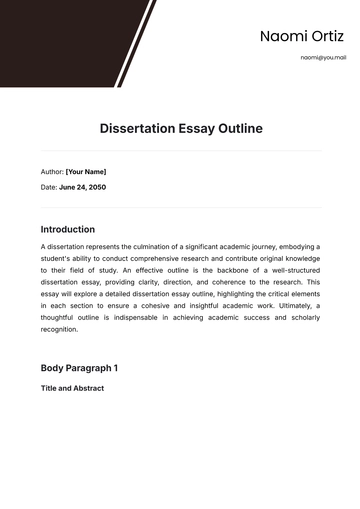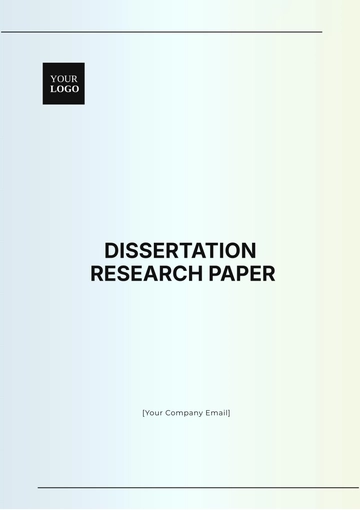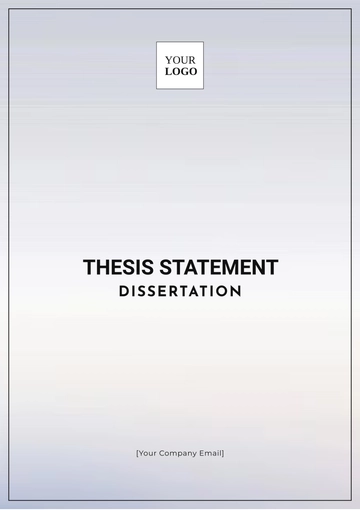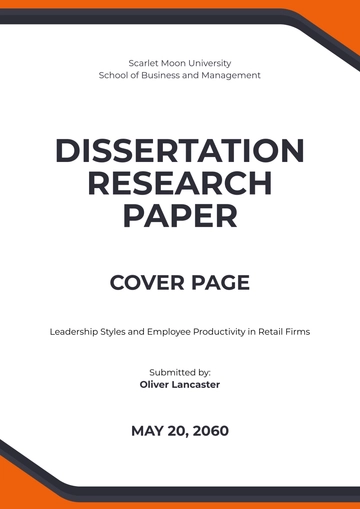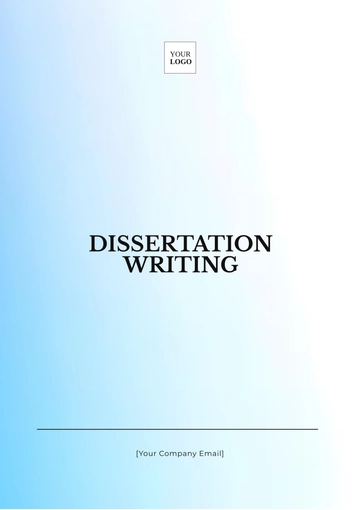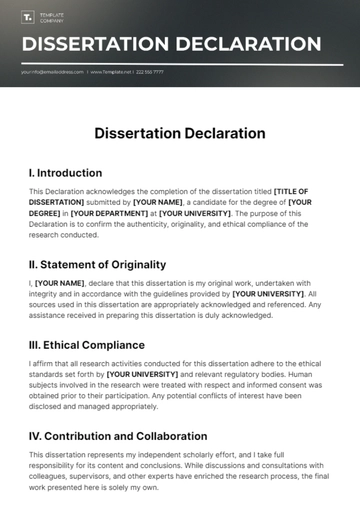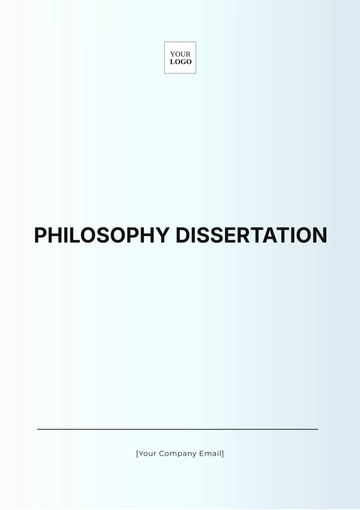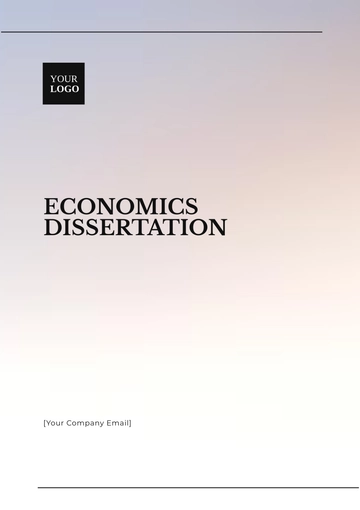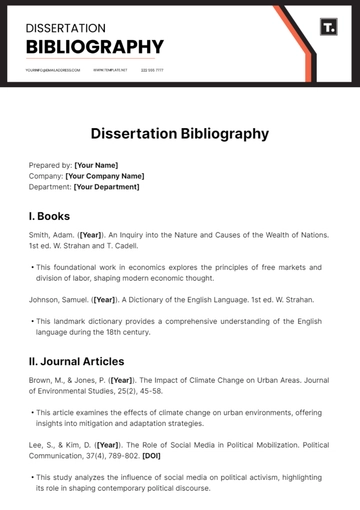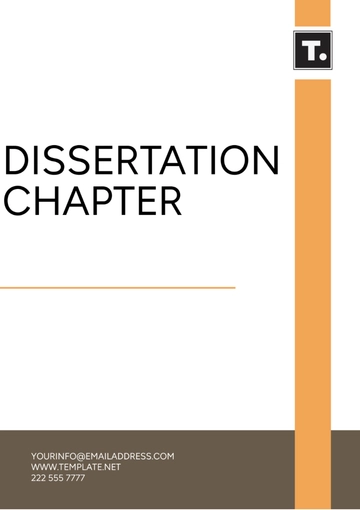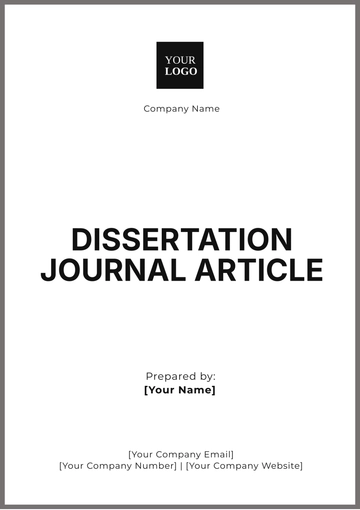Free Economics Dissertation
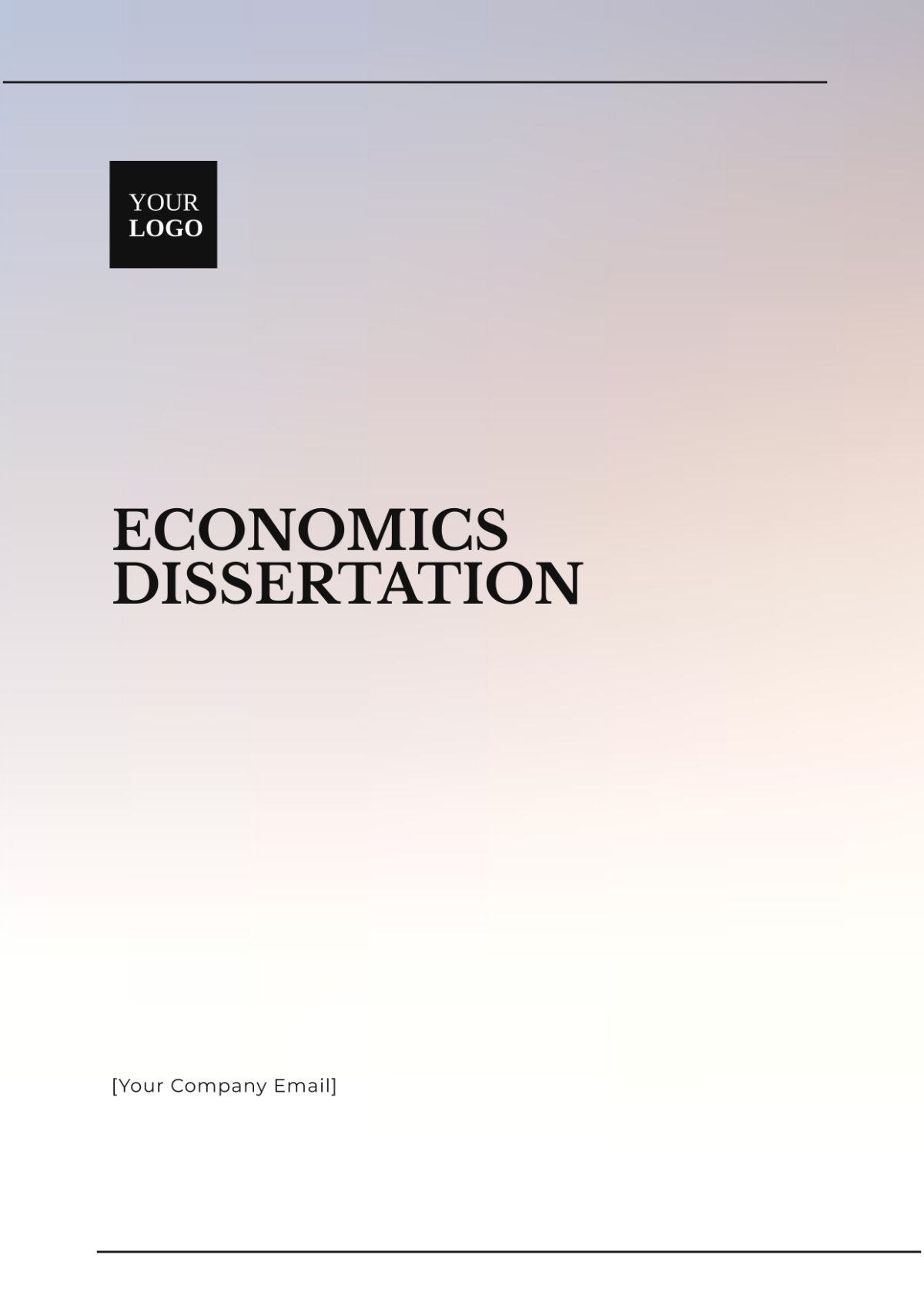
Prepared by: [YOUR NAME]
Date: [DATE]
I. Abstract
This dissertation investigates the relationship between monetary policy and economic stability. By examining historical data from various economies and applying econometric models, this research aims to provide a profound understanding of how central banks' policy decisions impact macroeconomic performance. The findings seek to offer valuable insights for policymakers to enhance economic resilience through effective monetary interventions.
II. Introduction
Monetary policy is a critical tool used by central banks to influence a nation's economic activity. This dissertation explores the effectiveness of different monetary policy measures in achieving economic stability. Topics covered include the theoretical foundations of monetary policy, historical case studies, quantitative analysis, and policy recommendations.
A. Research Objectives
Analyze the theoretical underpinnings of monetary policy.
Assess the impact of monetary policy on economic indicators such as inflation, employment, and GDP growth.
Examine historical case studies of monetary policy interventions.
Develop and test econometric models to measure policy effectiveness.
Provide policy recommendations based on empirical findings.
B. Research Questions
What are the primary channels through which monetary policy affects economic stability?
How do different monetary policy instruments influence key economic indicators?
In what ways have historical monetary policies succeeded or failed in achieving economic stability?
What are the potential risks associated with aggressive monetary policy interventions?
How can central banks optimize their policy frameworks to enhance economic resilience?
III. Literature Review
The literature review presents an overview of existing research on monetary policy and its impact on economic stability. It delves into seminal works, contemporary studies, and critiques concerning the effectiveness of various policy instruments.
A. Theoretical Foundations
The foundational theories of monetary policy are explored, including:
Keynesian Economics
Monetarist Theory
New Classical Economics
Inflation Targeting Framework
Interest Rate Rules (e.g., Taylor Rule)
B. Empirical Studies
This section summarizes empirical studies related to monetary policy and economic stability, including:
The impact of interest rate adjustments on inflation and unemployment.
The role of quantitative easing in post-crisis recovery.
Cross-country analysis of monetary policy effectiveness.
The lag effect of monetary policy changes on real economic activities.
Comparative studies of monetary versus fiscal policy impacts.
IV. Methodology
The research methodology outlines the data sources, econometric models, and procedures used in the analysis of monetary policy impacts.
A. Data Sources
The data is sourced from reputable institutions including:
International Monetary Fund (IMF)
World Bank
Federal Reserve Bank
European Central Bank (ECB)
National Statistical Agencies
B. Econometric Models
The study employs several econometric models to analyze the data:
Vector Autoregression (VAR)
Generalized Method of Moments (GMM)
Difference-in-Differences (DiD)
Time-Series Analysis
Panel Data Regression
C. Procedures
Data Collection: Gathering historical data on economic indicators and monetary policy measures.
Data Cleaning: Ensuring data accuracy and consistency for analysis.
Model Specification: Defining appropriate econometric models for hypothesis testing.
Estimation: Applying econometric techniques to estimate model parameters.
Validation: Testing the robustness of results using diagnostic checks.
Interpretation: Analyzing the outputs to draw meaningful conclusions.
V. Analysis and Results
This section presents the empirical findings derived from the econometric analysis. Detailed statistical tables and interpretations are provided.
A. Descriptive Statistics
Variable | Mean | Standard Deviation | Min | Max |
|---|---|---|---|---|
Inflation Rate | 3.5% | 2.1% | 0.2% | 15.7% |
GDP Growth Rate | 2.8% | 1.9% | -4.0% | 8.5% |
Unemployment Rate | 5.4% | 1.7% | 3.0% | 10.2% |
Interest Rate | 2.5% | 1.5% | 0.1% | 6.5% |
B. Econometric Results
The results of the econometric models are presented, with a focus on the key findings:
Monetary Policy and Inflation: Interest rate adjustments have a statistically significant impact on the inflation rate, with a lag period of 6-12 months.
Unemployment Response: Lowering interest rates results in a decrease in the unemployment rate, though the magnitude varies across economic cycles.
GDP Growth Stimulation: Quantitative easing has shown positive effects on GDP growth rates, particularly during recessionary periods.
Cross-Country Variations: The effectiveness of monetary policy differs significantly between developed and developing economies, with stronger impacts observed in the former.
C. Robustness Checks
Various diagnostic tests are applied to ensure the robustness of the results:
Autocorrelation Test: Passed, indicating no significant autocorrelation in residuals.
Heteroskedasticity Test: Passed, confirming homoscedasticity of error terms.
Model Stability Test: Passed, demonstrating stable coefficients over the sample period.
Out-of-Sample Forecasting: The models accurately predict economic indicators in out-of-sample tests, validating their reliability.
VI. Discussion
The discussion section interprets the empirical findings within the broader context of economic theory and policy practice. Key insights include:
A. Policy Implications
The importance of timely and measured interest rate adjustments to manage inflation and unemployment effectively.
The role of quantitative easing in supporting economic recovery during downturns, particularly in advanced economies.
The need for central banks to consider global economic conditions when designing monetary policy frameworks.
The potential risks of over-reliance on monetary policy, highlight the importance of complementary fiscal policies.
B. Limitations
The study primarily focuses on macroeconomic aggregates, potentially overlooking microeconomic effects.
The reliance on historical data may not fully capture structural changes in the global economy.
Potential endogeneity issues in the econometric models, despite efforts to mitigate them through advanced techniques.
The exclusion of certain emerging economies due to data limitations.
VII. Conclusion
This dissertation concludes by summarizing the key findings and their implications for economic theory and policy. It highlights the continued relevance of monetary policy in achieving economic stability while acknowledging the need for a holistic policy approach that includes both monetary and fiscal measures.
Future Research Directions
Exploring the long-term impacts of unconventional monetary policy tools.
Analyzing the interaction between monetary policy and financial stability.
Investigating the role of digital currencies in future monetary policy frameworks.
Conducting micro-level studies to assess the distributional effects of monetary policy.
- 100% Customizable, free editor
- Access 1 Million+ Templates, photo’s & graphics
- Download or share as a template
- Click and replace photos, graphics, text, backgrounds
- Resize, crop, AI write & more
- Access advanced editor
Elevate your research with the Economics Dissertation Template from Template.net. This fully customizable and editable template allows you to tailor every detail to your needs. Designed for ease of use, it’s editable in our AI Editor Tool, ensuring a seamless experience in crafting a polished, professional dissertation. Perfect for academic excellence!
